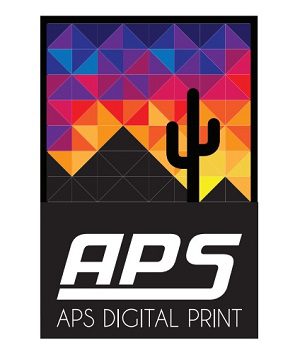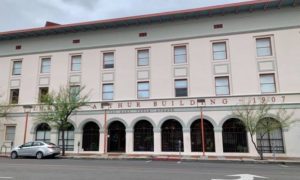FOLLOW @JAVIERJMORALES ON TWITTER!
[rps-paypal]
[ezcol_1half id=”” class=”” style=””]

TABLE OF CONTENTS:
— General history
— J.F. “Pop” McKale
— The games
— Comparisons then and now
— Wildcats nickname
— Military service
— Rankings
— The players
[/ezcol_1half]
[ezcol_1half_end id=”” class=”” style=””]
Clipping of actual L.A. Times article published Nov. 8, 1914
Excerpt from L.A. Times, Nov. 8, 1914, authored by Bill Henry:
“Arizona’s cactus-fed athletes, despite heroic efforts on the part of their two halfbacks, (Asa) Porter and (Franklin) Luis, went down to defeat before the Occidental Tigers yesterday afternoon, the tally with all precincts heard from being 14 to 0 in favor of the Tigers.
Confident of rolling up a big score, the Tigers took the field with grins on their faces, but before the game was 10 seconds old they knew they had a battle on their hands.
The Arizona men showed the fight of wild cats and displayed before the public gaze a couple of little shrimps in the backfield who defied all attempts of the Tigers to stop them.”This site will conduct a countdown in a 100-day period, leading up to Arizona’s 2014 football season-opener with UNLV on Aug. 29 at Arizona Stadium. The 100 Days ‘Til Kickoff countdown will include information daily about the historic 1914 Arizona team that helped create the school’s nickname of “Wildcats” because of how they played that fateful day against Occidental.
[/ezcol_1half_end]
[ezcol_1half id=”” class=”” style=””]

J.F. “Pop” McKale’s hiring in 1914 was a significant development in the history of Arizona Wildcats athletics
On Day No. 14 in our countdown to kickoff, including this series on the historic Arizona Varsity football team, we take a look at the Top 14 reasons why J.F. “Pop” McKale’s first team at the university is important to the tradition of the program:
No. 14 — Attendance figures were not kept but reportedly the crowd at the Pomona (Calif.) game on Thanksgiving Day in 1914 was the largest to date, making it clear that football can become a popular sport in Tucson.
No. 13 — Arizona become one of the first major colleges to adopt the nickname “Wildcats”. Kentucky (1910) was the first. Kansas State (1915) and Northwestern (1924) followed Kentucky and Arizona. Arizona leads the tally of Wildcats vs. Wildcats with a 7-1-1 record, followed by Northwestern (3-2), Kentucky (3-2) and Kansas State (2-10-1).
No. 12 — McKale starts to add vigor to the Arizona-Tempe Normal (ASU) rivalry by designating the game as a “practice game” for the Varsity.
No. 11 — Arizona fullback Orville S. McPherson later engineers an effort for the school to build a stadium, which opens 1929.
[/ezcol_1half]
[ezcol_1half_end id=”” class=”” style=””]
THE LAST WEEK IN THE SERIES:
— No. 15: Varsity member created idea of “A” Mountain 100 years ago
— No. 16: A calendar look at 1914 season in unique way
— No. 17: 1914 team member, wife constructed Vail’s Santa Rita in the Desert
— No. 18: Talents of 1914 football Varsity went well beyond playing field
— No. 19: Emzy Lynch family member recalls peculiar prediction by great uncle
— No. 20: Two 1914 Varsity football members part of student newspaper staff
— No. 21: Development of fraternity life significant 100 years ago
[/ezcol_1half_end]

The 1914 Arizona football team that earned the honor of being named the first “Wildcats” was composed of (front row, left to right): Verne La Tourette, George Seeley, Leo Cloud, Richard Meyer, Asa Porter. Second row: Franklin Luis, Lawrence Jackson, Ray Miller, J.F. “Pop” McKale (coach), Turner Smith, Harry Hobson (manager), Orville McPherson, Albert Crawford, Ernest Renaud. Back row: Albert Condron, Emzy Lynch, Charley Beach, Vinton Hammels, Bill Hendry, George Clawson, Harry Turvey.
(AllSportsTucson.com graphic/Photo from University of Arizona Library Special Collections)
[ezcol_1half id=”” class=”” style=””]
What they were talking about on this day in 1914
Saturday, Aug. 15, 1914
The Panama Canal, an engineering marvel that permanently changed world trade and still plays an essential role in global commerce, makes a grand opening. The French started digging the canal in the early 1880s. Several years later, after engineering setbacks and an estimated 20,000 worker deaths due to disease and accidents, they abandoned their efforts. The project was later picked up by the U.S. during the Theodore Roosevelt administration. In 1902, Congress passed legislation funding the canal’s construction. At the time, Panama was part of Colombia, and the U.S. began treaty negotiations with the Colombian government. When Colombia turned down the treaty in a dispute over payment, the U.S. backed an anti-Colombian revolution by Panamanians, and Panama became an independent nation in 1903. The Roosevelt administration quickly jumped in and negotiated a treaty with the new nation’s government, establishing the 10-mile-wide strip of land that became the U.S. Canal Zone, along with a one-time payment of $10 million to Panama and an annual annuity of $250,000. After a decade of intense effort, and at the cost of more than an additional 5,600 workers’ lives, the canal opened for business on Aug. 15, 1914.
[/ezcol_1half]
[ezcol_1half_end id=”” class=”” style=””]
[/ezcol_1half_end]

Albert Crawford, a quarterback on the 1914 team, wearing a Photoshopped No. 14 (Desert Yearbook photo)
No. 10 — Arizona’s successful 4-1 record and hard-fought game at Occidental validates and fuels McKale’s desire to upgrade the program’s schedule in the future.
No. 9 — Three members of the Varsity — halfback Franklin A. Luis, fullback Ernest J. Renaud and left guard George A. Clawson — were also part of the marching band, which was at the genesis of becoming the “Pride of Arizona”
No. 8 — Arizona senior right end Lawrence R. Jackson is the first president of the prestigious “A” Club, which was instituted by McKale to draw interest to the athletic program from prospect student-athletes across the state.
No. 7 — Arizona junior left tackle Albert H. Condron develops the idea of placing an “A” near the top of Sentinel Peak after the Varsity defeats Pomona on Thanksgiving Day. “A” Mountain was officially completed on March 4, 1916.
No. 6 — Arizona’s first Wildcat mascot was developed from the 1914 season with the live cat named “Rufus Arizona” after then-president Rufus B. von KleinSmid. The name of the costumed mascot became “Wilbur” in 1959.
No. 5 — McKale introduced spring practice at Arizona toward the end of the 1914-15 school year. The purpose, as reported by Arizona Life, the student newspaper: “To get the team somewhat experienced before next fall. Competition with our California rivals will be very strong next year and we want to keep the Championship of the Southwest in Arizona.”
No. 4 — Arizona earns its first football championship, claiming the Southwestern crown by beating Pomona and New Mexico State in Tucson.
No. 3 — Arizona’s first homecoming game was played in 1914, the Thanksgiving Day game against Pomona, a rousing 7-6 victory.
No. 2 — McKale’s hiring in 1914 and his hard edge were immediately important for not only the football program but the athletic department in general. He placed a never-before-seen value of competing with a sense of pride and tenacity with the program.
No. 1 — The nickname of “Wildcats” was born the day after Arizona lost to Occidental 14-0 (notice the score had the number 14) in Los Angeles when L.A. Times correspondent Bill Henry reports: “The Arizona men showed the fight of wild cats”.
ALLSPORTSTUCSON.com publisher, writer and editor Javier Morales is a former Arizona Press Club award winner. He also writes articles for Bleacher Report and Lindy’s College Sports.




























